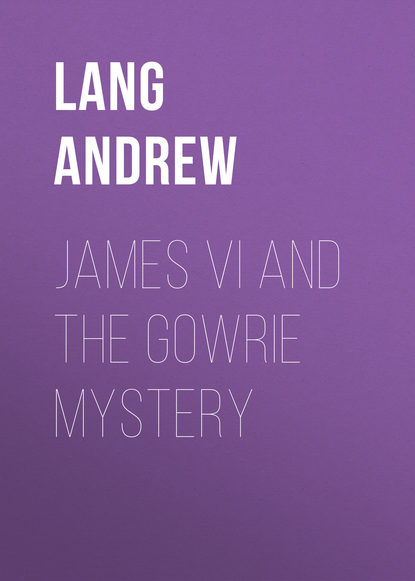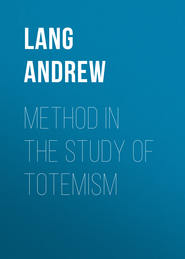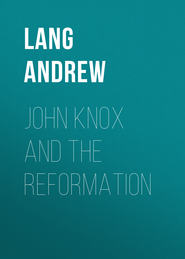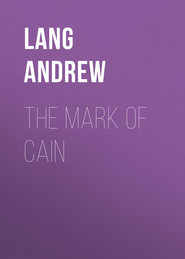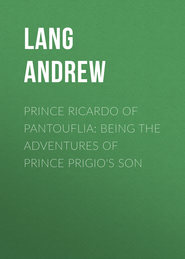По всем вопросам обращайтесь на: info@litportal.ru
(©) 2003-2024.
✖
James VI and the Gowrie Mystery
Настройки чтения
Размер шрифта
Высота строк
Поля
In any case, to go on with James’s tale, he went with Ruthven up a staircase (the great staircase), ‘and through three or four rooms’ – ‘three or four sundry houses’ – ‘the Master ever locking behind him every door as he passed, and so into a little study’ – the turret. This is perplexing. We nowhere hear in the evidence of more than two doors, in the suite, which were locked. The staircase perhaps gave on the long gallery, with a door between them. The gallery gave on a chamber, which had a door (the door battered by Lennox and Mar), and the chamber gave on a turret, which had a door between it and the chamber.
We hear, in the evidence, of no other doors, or of no other locked doors. However, in the Latin indictment of the Ruthvens, ‘many doors’ are insisted on. As all the evidence tells of opposition from only one door – that between the gallery and the chamber of death – James’s reason for talking of ‘three or four doors’ must be left to conjecture. ‘The True Discourse’ (MS.) gives but the gallery, chamber, and turret, but appears to allow for a door between stair and gallery, which the Master ‘closed,’ while he ‘made fast’ the next door, that between gallery and chamber. One Thomas Hamilton, [21 - Apparently not Sir Thomas Hamilton, the King’s Advocate.] who writes a long letter (MS.) to a lady unknown, also speaks of several doors, on the evidence of the King, and some of the Lords. This manuscript has been neglected by historians. [22 - State Papers, Scotland (Elizabeth), vol. lxvi. No. 51.]
Leaving this point, we ask why a man already suspicious, like James, let the Master lock any door behind him. We might reply that James had dined, and that ‘wine and beer produce a careless state of mind,’ as a writer on cricket long ago observed. We may also suppose that, till facts proved the locking of one door at least (for about that there is no doubt), James did not know that any door was locked. On August 11 the Rev. Mr. Galloway, in a sermon preached before the King and the populace at the Cross of Edinburgh, says that the Master led the monarch upstairs, ‘and through a trans’ (a passage), ‘the door whereof, so soon as they had entered, chekit to with ane lok, then through a gallery, whose door also chekit to, through a chamber, and the door thereof chekit to, also,’ and thence into the turret of which he ‘also locked the door.’ [23 - Pitcairn, vol. ii. p. 249.]
Were the locks that ‘chekit to’ spring locks, and was James unaware that he was locked in? But Ramsay, before the affray, had wandered into ‘a gallery, very fair,’ and unless there were two galleries, he could not do this, if the gallery door was locked. Lennox and Mar and the rest speak of opposition from only one door.
While we cannot explain these things, that door, at least, between the gallery and the gallery chamber, excluded James from most of his friends. Can the reader believe that he purposely had that door locked, we know not how, or by whom, on the system of compelling Gowrie to ‘come and be killed’ by way of the narrow staircase? Could we see Gowrie House, and its ‘secret ways,’ as it then was, we might understand this problem of the locked doors. Contemporary criticism, as minutely recorded by Calderwood, found no fault with the number of locked doors, but only asked ‘how could the King’s fear but increase, perceiving Mr. Alexander’ (the Master) ‘ever to lock the doors behind them?’ If the doors closed with spring locks (of which the principle had long been understood and used), the King may not have been aware of the locking. The problem cannot be solved; we only disbelieve that the King himself had the door locked, to keep his friends out, and let Gowrie in.
Note. – The Abbey of Scone. On page 48 we have quoted the statement that James had bestowed on Gowrie the Abbey of Scone ‘during his life.’ This was done in 1580 (Registrum Magni Sigilli, vol. iii. No. 3011). On May 25, 1584, William Fullarton got this gift, the first Earl of Gowrie and his children being then forfeited. But on July 23, 1586, the Gowrie of the day was restored to all his lands, and the Earldom of Gowrie included the old church lands of Scone (Reg. Mag. Sig. iv. No. 695, No. 1044). How, then, did John, third Earl of Gowrie, hold only ‘for his life’ the Commendatorship of the Abbey of Scone, as is stated in S. P. Scot. (Eliz.) vol. lxvi. No. 50?
IV. THE KING’S NARRATIVE – II. THE MAN IN THE TURRET
We left James entering the little ‘round,’ or ‘study,’ the turret chamber. Here, at last, he expected to find the captive and the pot of gold. And here the central mystery of his adventure began. His Majesty saw standing, ‘with a very abased countenance, not a bondman but a freeman, with a dagger at his girdle.’ Ruthven locked the door, put on his hat, drew the man’s dagger, and held the point to the King’s breast, ‘avowing now that the King behoved to be at his will, and used as he list; swearing many bloody oaths that if the King cried one word, or opened a window to look out, that dagger should go to his heart.’
If this tale is true, murder was not intended, unless James resisted: the King was only being threatened into compliance with the Master’s ‘will.’ Ruthven added that the King’s conscience must now be burthened ‘for murdering his father,’ that is, for the execution of William, Earl of Gowrie, in 1584. His conviction was believed to have been procured in a dastardly manner, later to be explained.
James was unarmed, and obviously had no secret coat of mail, in which he could not have hunted all day, perhaps. Ruthven had his sword; as for the other man he stood ‘trembling and quaking.’ James now made to the Master the odd harangue reported even in Nicholson’s version of the Falkland letter of the same day. As for Gowrie’s execution, the King said, he had then been a minor (he was eighteen in 1584), and Gowrie was condemned ‘by the ordinary course of law’ – which his friends denied. James had restored, he said, all the lands and dignities of the House, two of Ruthven’s sisters were maids of honour. Ruthven had been educated by the revered Mr. Rollock, he ought to have learned better behaviour. If the King died he would be avenged: Gowrie could not hope for the throne. The King solemnly promised forgiveness and silence, if Ruthven let him go.
Ruthven now uncovered his head, and protested that the King’s life should be safe, if he made no noise or cry: in that case Ruthven would now bring Gowrie to him. ‘Why?’ asked James; ‘you could gain little by keeping such a prisoner?’ Ruthven said that he could not explain; Gowrie would tell him the rest. Turning to the other man, he said ‘I make you the King’s keeper till I come again, and see that you keep him upon your peril.’ He then went out, and locked the door. The person who later averred that he had been the man in the turret, believed that Ruthven never went far from the door. James believed, indeed averred, that he ran downstairs, and consulted Gowrie.
If there was an armed man in the turret, he was either placed there by the King, to protect him while he summoned his minions by feigned cries of treason, or he was placed there by Gowrie to help the Master to seize the King. In the latter case, the Master’s position was now desperate; in lieu of an ally he had procured a witness against himself. Great need had he to consult Gowrie, but though Gowrie certainly entered the house, went upstairs, and returned to Lennox with the assurance that James had ridden away, it is improbable that he and his brother met at this moment. James, however, avers that they met, Ruthven running rapidly downstairs, but this was mere inference on the King’s part.
James occupied the time of Ruthven’s absence in asking the man of the turret what he knew of the conspiracy. The man replied that he knew nothing, he had but recently been locked into the little chamber. Indeed, while Ruthven was threatening, the man (says James) was trembling, and adjuring the Master not to harm the King. James, having sworn to Ruthven that he would not open the window himself, now, characteristically, asked the man to open the window ‘on his right hand.’ If the King had his back to the turret door, the window on his right opened on the courtyard, the window on his left opened on the street. The man readily opened the window, says the King, and the person claiming to be the man deponed later that he first opened what the King declared to be the wrong window, but, before he could open the other, in came the Master, who, ‘casting his hands abroad in desperate manner, said “he could not mend it, his Majesty behoved to die.”’ Instead of stabbing James, however, he tried to bind the Royal hands with a garter, ‘swearing he behoved to be bound.’ (A garter was later picked up on the floor by one of the witnesses, Graham of Balgonie, and secured by Sir Thomas Erskine. [24 - Mr. Scott suggested that a piece of string was found by Balgonie. The words of Balgonie are ‘ane gartane’ – a garter. He never mentions string.])
V. HENDERSON’S NARRATIVE
The man in the turret had vanished like a ghost. Henderson, on the day after the tragedy, was also not to be found. Like certain Ruthvens, Hew Moncrieff, Eviot, and others, who had fought in the death-chamber, or been distinguished in the later riot, Henderson had fled. He was, though a retainer of Gowrie, a member of the Town Council of Perth, and ‘chamberlain,’ or ‘factor,’ of the lands of Scone, then held by Gowrie from the King. To find any one who had seen him during the tumult was difficult or impossible. William Robertson, a notary of Perth, examined in November before the Parliamentary Committee, said then that he only saw Gowrie, with his two drawn swords, and seven or eight companions, in the forecourt of the house, and so, ‘being afraid, he passed out of the place.’ The same man, earlier, on September 23, when examined with other citizens of Perth, had said that he followed young Tullibardine and some of his men, who were entering the court ‘to relieve the King.’ [25 - Pitcairn, ii. 197.] He saw the Master lying dead at the foot of the stair, and saw Henderson ‘come out of the said turnpike, over the Master’s belly.’ He spoke to Henderson, who did not answer. He remembered that Murray of Arbany was present. Arbany, before the Parliamentary Committee in November, said nothing on this subject, nor did Robertson. His evidence would have been important, had he adhered to what he said on September 23. But, oddly enough, if he perjured himself on the earlier occasion (September 23), he withdrew his perjury, when it would have been useful to the King’s case, in the evidence given before the Lords of the Articles, in November. Mr. Barbé, perhaps misled by the sequence of versions in Pitcairn, writes: ‘Apparently it was only when his memory had been stimulated by the treatment of those whose evidence was found to be favourable to the King that the wily notary recalled the details by which he intended to corroborate Henderson’s statement… ’ [26 - The Tragedy of Gowrie House, by Louis Barbé, 1887, p. 91.]
The reverse is the case: the wily notary did not offer, at the trial in November, the evidence which he had given, in September, at the examination of the citizens of Perth. It may perhaps be inferred that perjury was not encouraged, but depressed. [27 - Mr. Barbé, as we saw, thinks that Robertson perjured himself, when he swore to having seen Henderson steal out of the dark staircase and step over Ruthven’s body. On the other hand, Mr. Bisset thought that Robertson spoke truth on this occasion, but concealed the truth in his examination later, because his evidence implied that Henderson left the dark staircase, not when Ramsay attacked Ruthven, but later, when Ruthven had already been slain. Mr. Bisset’s theory was that Henderson had never been in the turret during the crisis, but had entered the dark staircase from a door of the dining-hall on the first floor. Such a door existed, according to Lord Hailes, but when he wrote (1757) no traces of this arrangement were extant. If such a door there was, Henderson may have slunk into the hall, out of the dark staircase, and slipped forth again, at the moment when Robertson, in his first deposition, swore to having seen him. But Murray of Arbany cannot well have been there at that moment, as he was with the party of Lennox and Mar, battering at the door of the gallery chamber. – Bisset, Essays in Historical Truth, pp. 228–237. Hailes, Annals. Third Edition, vol. iii. p. 369. Note (1819).]
Despite the premiums on perjury which Ruthven apologists insist on, not one witness would swear to having seen Henderson during or after the tumult. Yet he instantly fled, with others who had been active in the brawl, and remained in concealment. Calderwood, the earnest collector of contemporary gossip and documents, assures us that when the man in the turret could not be found, the first proclamation identified him with a Mr. Robert Oliphant, a ‘black grim man,’ but that Oliphant proved his absence from Perth. One Gray and one Lesley were also suspected, and one Younger (hiding when sought for, it is said) was killed. But we have no copy of the proclamation as to Mr. Robert Oliphant. To Mr. Robert Oliphant, who had an alibi, we shall return, for this gentleman, though entirely overlooked by our historians, was probably at the centre of the situation (p. 71, infra).
Meanwhile, whatever Henderson had done, he mysteriously vanished from Gowrie House, during or after the turmoil, ‘following darkness like a dream.’ Nobody was produced who could say anything about seeing Henderson, after Moncrieff and the Hays saw him on his return from Falkland, at about ten o’clock in the morning of August 5.
By August 12, Henderson was still in hiding, and was still being proclaimed for, with others, of whom Mr. Robert Oliphant was not one: they were Moncrieff, Eviot, and two Ruthvens. [28 - Privy Council Register, vi. 149, 150.] But, on August 11 at the Cross of Edinburgh, in presence of the King, his chaplain, the Rev. Patrick Galloway, gave news of Henderson. Mr. Galloway had been minister of Perth, and a fierce Presbyterian of old.
Blow, Galloway, the trumpet of the Lord!
exclaimed a contemporary poet. But James had tamed Galloway, he was now the King’s chaplain, he did not blow the trumpet of the Lord any longer, and, I fear, was capable of anything. He had a pension, Calderwood tells us, from the lands of Scone, and knew Henderson, who, as Chamberlain, or steward, paid the money. In his exciting sermon, Galloway made a dramatic point. Henderson was found, and Henderson was the man in the turret! Galloway had received a letter from Henderson, in his own hand; any listener who knew Henderson’s hand might see the letter. Henderson tells his tale therein; Galloway says that it differs almost nothing from the King’s story, of which he had given an abstract in his discourse. And he adds that Henderson stole downstairs while Ramsay was engaged with the Master. [29 - Pitcairn, ii. 250.]
Henderson, being now in touch with Galloway, probably received promise of his life, and of reward, for he came in before August 20, and, at the trial in November, was relieved of the charge of treason, and gave evidence.
Here we again ask, Why did Henderson take to flight? What had he to do with the matter? None fled but those who had been seen, sword in hand, in the fatal chamber, or stimulating the populace to attack the King during the tumult. Andrew Ruthven, who had ridden to Falkland with Henderson and the Master, did not run away, no proclamation for him is on record. Nobody swore to seeing Henderson, like his fellow fugitives, armed or active, yet he fled and skulked. Manifestly Henderson had, in one way or other, been suspiciously concerned in the affair. He had come in, and was at Falkland, by August 20, when he was examined before the Chancellor, Montrose, the King’s Advocate, Sir Thomas Hamilton, Sir George Hume of Spot (later Earl of Dunbar), and others, in the King’s absence. He deponed that, on the night of August 4, Gowrie bade him and Andrew Ruthven ride early to Falkland with the Master, and return, if the Master ordered him so to do, with a message. At Falkland they went into a house, [30 - Mr. Panton, who, in 1812, published at Perth, and with Longmans, a defence of the Ruthvens, is very strong on the improbability that Henderson was at Falkland. Why were not the people to whose house in Falkland he went, called as witnesses? Indeed we do not know. But as Mr. Panton looked on the King’s witnesses as a gang of murderous perjurers, it is odd that he did not ask himself why they, and the King, did not perjure themselves on this point. (A Dissertation on the Gowry Conspiracy, pp. 127–131.)] and the Master sent him to learn what the King was doing. He came back with the news; the Master talked with the King, then told Henderson to carry to Gowrie the tidings of the King’s visit, ‘and that his Majesty would be quiet.’ Henderson asked if he was to start at once. Ruthven told him to wait till he spoke to the King again. They did speak, at a gap in a wall, during the check in the run; Ruthven returned to Henderson, sent him off, and Henderson reached Perth about ten o’clock. Gowrie, on his arrival, left the company he was with (the two Hays), and here George Hay’s evidence makes Gowrie ask Henderson ‘who was with the King at Falkland?’ Hay said that Gowrie then took Henderson into another room. Henderson says nothing about a question as to the King’s company, asked in presence of Hay, a compromising and improbable question, if Gowrie wished to conceal the visit to Falkland.
Apart, Gowrie put some other questions to Henderson as to how the King received the Master. Henderson then went to his house; an hour later Gowrie bade him put on his secret coat of mail, and plate sleeves, as he had to arrest a Highlander. Henderson did as commanded; at twelve the steward told him to bring up dinner, as Craigengelt (the caterer) was ill. Dinner began at half-past twelve; at the second course the Master entered, Andrew Ruthven had arrived earlier. The company rose from table, and Henderson, who was not at the moment in the room, heard them moving, and thought that they were ‘going to make breeks for Maconilduy,’ that is, to catch the Highlander. Finding he was wrong, he threw his steel gauntlet into the pantry, and sent his boy to his house with his steel cap. He then followed Gowrie to meet the King, and, after he had fetched ‘a drink’ (which James says ‘was long in coming’), the Master bade him ask Mr. Rhynd, Gowrie’s old tutor, for the key of the gallery, which Rhynd brought to the Master. Gowrie then went up, and spoke with the Master, and, after some coming and going, Henderson was sent to the Master in the gallery. Thither Gowrie returned, and bade Henderson do whatever the Master commanded. (The King says that Gowrie came and went from the room, during his dinner.) The Master next bade Henderson enter the turret, and locked him in. He passed the time in terror and in prayer.
There follows the story of the entry of James and the Master, and Henderson now avers that he ‘threw’ the dagger out of the Master’s hand. He declares that the Master said that he wanted ‘a promise from the King,’ on what point Gowrie would explain. The rest is much as in the King’s account, but Henderson was ‘pressing to have opened the window,’ he says, when the Master entered for the second time, with the garter to bind the King’s hands. During the struggle Henderson removed the Master’s hand from the King’s mouth, and opened the window. The Master said to him, ‘Wilt thou not help? Woe betide thee, thou wilt make us all die.’ [31 - Pitcairn, ii. 222, 223.]





